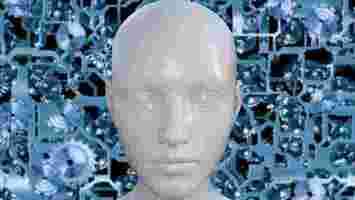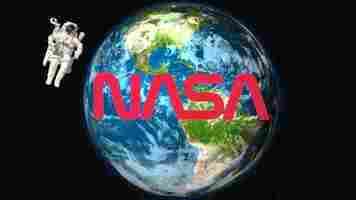Sony’s new AI-powered TVs ‘mimic the human brain’
Sony has unveiled a new lineup of Bravia TVs that “mimic the human brain” to replicate how we see and hear.

The devices use a new processing method that Sony calls “cognitive intelligence.” The company says it goes beyond standard AI to create an immersive visual and sound experience:
The processor divides the screen into zones and detects the focal point in the picture. It also analyzes sound positions in the signal to match the audio to the images on the screen.
In a video demo , Sony said the expanding size of TVs has made viewers focus on parts of the screens rather than the entire image — like we do when viewing the real world.
“The human eye uses different resolutions when we are looking at the whole picture and when we are focusing on something specific,” said Yasuo Inoue, a Sony signal processing expert.
“The XR Processor analyzes the focal point and refers to that point as it processes the entire image to generate an image close to what a human sees.”
It’s impossible to tell how well the AI works without seeing the TVs in person. If you wanna test it out yourself, you’ll likely need deep pockets.
Pricing and availability for the new lineup will be announced in the spring.
Should a conscious robot get the same rights as a human?
In the “ Star Trek: The Next Generation ” episode “ The Measure of a Man ” Data, an android crew member of the Enterprise, is to be dismantled for research purposes unless Captain Picard can argue that Data deserves the same rights as a human being. Naturally, the question arises: What is the basis upon which something has rights? What gives an entity moral standing?

The philosopher Peter Singer argues that creatures that can feel pain or suffer have a claim to moral standing. He argues that nonhuman animals have moral standing since they can feel pain and suffer. Limiting it to people would be a form of speciesism, something akin to racism and sexism.
Without endorsing Singer’s line of reasoning, we might wonder if it can be extended further to an android robot like Data. It would require that Data can either feel pain or suffer. And how you answer that depends on how you understand consciousness and intelligence.
As real artificial intelligence technology advances toward Hollywood’s imagined versions, the question of moral standing grows more important. If AIs have moral standing, philosophers like me reason, it could follow that they have a right to life. That means you cannot simply dismantle them, and might also mean that people shouldn’t interfere with their pursuing their goals.
Two flavors of intelligence and a test
IBM’s Deep Blue chess machine was successfully trained to beat grandmaster Gary Kasparov. But it could not do anything else. This computer had what’s called domain-specific intelligence.
On the other hand, there’s the kind of intelligence that allows for the ability to do a variety of things well. It is called domain-general intelligence. It’s what lets people cook, ski, and raise children – tasks that are related, but also very different.
Artificial general intelligence, AGI, is the term for machines that have domain-general intelligence. Arguably no machine has yet demonstrated that kind of intelligence. This summer, a startup called OPENAI released a new version of its Generative Pre-Training language model. GPT-3 is a natural-language-processing system, trained to read and write so that it can be easily understood by people.
It drew immediate notice , not just because of its impressive ability to mimic stylistic flourishes and put together plausible content , but also because of how far it had come from a previous version. Despite this impressive performance, GPT-3 doesn’t actually know anything beyond how to string words together in various ways. AGI remains quite far off.
Named after pioneering AI researcher Alan Turing, the Turing test helps determine when an AI is intelligent. Can a person conversing with a hidden AI tell whether it’s an AI or a human being? If he can’t, then for all practical purposes, the AI is intelligent. But this test says nothing about whether the AI might be conscious.
Two kinds of consciousness
There are two parts of consciousness. First, there’s the what-it’s-like-for-me aspect of an experience, the sensory part of consciousness. Philosophers call this phenomenal consciousness. It’s about how you experience a phenomenon, like smelling a rose or feeling pain.
In contrast, there’s also access consciousness. That’s the ability to report, reason, behave, and act in a coordinated and responsive manner to stimuli based on goals. For example, when I pass the soccer ball to my friend making a play on the goal, I am responding to visual stimuli, acting from prior training, and pursuing a goal determined by the rules of the game. I make the pass automatically, without conscious deliberation, in the flow of the game.
Blindsight nicely illustrates the difference between the two types of consciousness. Someone with this neurological condition might report, for example, that they cannot see anything on the left side of their visual field. But if asked to pick up a pen from an array of objects on the left side of their visual field, they can reliably do so. They cannot see the pen, yet they can pick it up when prompted – an example of access consciousness without phenomenal consciousness.
Data is an android. How do these distinctions play out with respect to him?
The Data dilemma
The android Data demonstrates that he is self-aware in that he can monitor whether or not, for example, he is optimally charged or there is internal damage to his robotic arm.
Data is also intelligent in the general sense. He does a lot of distinct things at a high level of mastery. He can fly the Enterprise, take orders from Captain Picard, and reason with him about the best path to take.
He can also play poker with his shipmates, cook, discuss topical issues with close friends, fight with enemies on alien planets , and engage in various forms of physical labor. Data has access consciousness. He would clearly pass the Turing test.
However, Data most likely lacks phenomenal consciousness – he does not, for example, delight in the scent of roses or experience pain. He embodies a supersized version of blindsight. He’s self-aware and has access consciousness – can grab the pen – but across all his senses he lacks phenomenal consciousness.
Now, if Data doesn’t feel pain, at least one of the reasons Singer offers for giving a creature moral standing is not fulfilled. But Data might fulfill the other condition of being able to suffer, even without feeling pain. Suffering might not require phenomenal consciousness the way pain essentially does.
For example, what if suffering were also defined as the idea of being thwarted from pursuing a just cause without causing harm to others? Suppose Data’s goal is to save his crewmate, but he can’t reach her because of damage to one of his limbs. Data’s reduction in functioning that keeps him from saving his crewmate is a kind of nonphenomenal suffering. He would have preferred to save the crewmate, and would be better off if he did.
In the episode, the question ends up resting not on whether Data is self-aware – that is not in doubt. Nor is it in question whether he is intelligent – he easily demonstrates that he is in the general sense. What is unclear is whether he is phenomenally conscious. Data is not dismantled because, in the end, his human judges cannot agree on the significance of consciousness for moral standing.
Should an AI get moral standing?
Data is kind – he acts to support the well-being of his crewmates and those he encounters on alien planets. He obeys orders from people and appears unlikely to harm them, and he seems to protect his own existence . For these reasons he appears peaceful and easier to accept into the realm of things that have moral standing.
But what about Skynet in the “Terminator” movies? Or the worries recently expressed by Elon Musk about AI being more dangerous than nukes , and by Stephen Hawking on AI ending humankind ?
Human beings don’t lose their claim to moral standing just because they act against the interests of another person. In the same way, you can’t automatically say that just because an AI acts against the interests of humanity or another AI it doesn’t have moral standing. You might be justified in fighting back against an AI like Skynet, but that does not take away its moral standing. If moral standing is given in virtue of the capacity to nonphenomenally suffer, then Skynet and Data both get it even if only Data wants to help human beings.
There are no artificial general intelligence machines yet. But now is the time to consider what it would take to grant them moral standing. How humanity chooses to answer the question of moral standing for nonbiological creatures will have big implications for how we deal with future AIs – whether kind and helpful like Data, or set on destruction, like Skynet.
This article is republished from The Conversation by Anand Vaidya , Associate Professor of Philosophy, San José State University under a Creative Commons license. Read the original article .
How NASA’s space research ends up in earthly products
NASA is best known for exploring space , but the agency’s technology is also touching down on Earth.

A new book, called Spinoff 2022 , shines the spotlight on the products that have emerged from NASA’s research.
They include an air purifier that’s on tech for growing plants in space; blankets crafted from a substance that NASA created to chill rocket fuel; and underwear for race car drivers that uses material originally developed for spacesuits.


The book also explores 20 recent NASA innovations that are ripe for commercial application.
These range from a biometric system that unlocks phones with heartbeats to a thin-film device that converts CO2 into fuel.
NASA has sought to develop practical products since the agency’s inception in 1958. Today, this work is led by the Technology Transfer program , which searches for the widest possible applications for NASA tech.
“There’s a lot of parallels between the issues we see in space and the issues we see on Earth,” Daniel Lockney, the program executive, told TNW. “From trying to find ways to recycle water, to getting more efficient energy usage and keeping astronauts safe in remote areas, there’s a lot of overlap.”
Lockney oversees the strategy for finding these areas of overlap. The process begins whenever someone spends NASA money on R&D to create something new.
The invention is first reported to the Technology Transfer office. Teams at NASA’s field centers then determine whether the designs are technically feasible and could have a secondary application.
“We figure out if anyone else can use it — and how we can get it to them,” said Lockney.
If it’s software, NASA gives it away for free. If it’s hardware, however, the agency first determines whether a patent is necessary to help companies bring it to market. But the most common approach is to just publish the content and share it as widely as possible.
The free market is then responsible for turning the invention into products.
The program is primarily taxpayer-funded, although NASA does collect a small royalty fee on licensed patents.
“That mostly goes to the inventors as a reward for coming up with a cool idea — and an incentive to continue reporting inventions,” said Lockney. “Nobody’s getting rich off of it; it’s a neat bonus, but it’s a public service and this is a taxpayer-funded activity.
The public service has produced a diverse array of products. They range from the cameras used in many modern smartphones , which NASA pioneered for interplanetary space travel, to a zit zapper that harnesses the agency’s research on thermodynamics.
However, not all the rumors about NASA’s innovations are true — such as the myth of the space pen.
NASA had reportedly spent millions to invent a pen that can write in zero gravity, while Soviet cosmonauts simply used a pencil. In reality, however, the device was independently developed by the founder of the Fisher Pen Company, with $1million of his own funds.
The device was less flammable than pencils and removed the risk of broken lead floating around in microgravity. NASA then tested and approved the design for space use.
Even the Soviet Union has purchased the pen for spaceflights, while NASA astronauts continue using it today.
Another common misconception is that NASA invented Tang , a drink mix that was used on several early space missions.
“Even though that wasn’t created by us, it shows the expectation that there would be all of these cool benefits from space and NASA missions,” said Lockney.
Lockney believes that his program also makes NASA’s work more relatable:
They also prove that exploring space can have terrestrial benefits.